Article's Content
eHow.com is a popular DIY-focused website that boasts 3.2 million monthly sessions, 180,000 articles accessed monthly, six million monthly video views, and four million social subscribers.
But the path to industry dominance hasn’t been smooth for eHow. This case study will look at the critical mistakes that nearly sank the company and how they’ve corrected course with a content marketing engine rooted in search intent that drives consistently impressive results.
A Rocky Start for eHow
The how-to hub, known as eHow, was founded in 1999. This period of time was defined by low interest rates and a long line of entrepreneurs seeking to get rich on the internet. Investors tended to get on board with any project as long as a business had a “dot-com” in the pitch, leading to an influx of start-ups.
But the party ended in 2000 when the dot-com bubble burst, and many online companies went belly up. After failing for two straight years to reach profitability through their content alone, eHow’s funding ran out, and they filed for Chapter 7 bankruptcy in 2001.
Demand Media acquired eHow in 2006, bringing some much-needed strategy and swagger. The screenshot below shows the sorry state of the site at the time of the acquisition. It suffered from a clumsy design that made it look like a junk drawer of how-to lists.
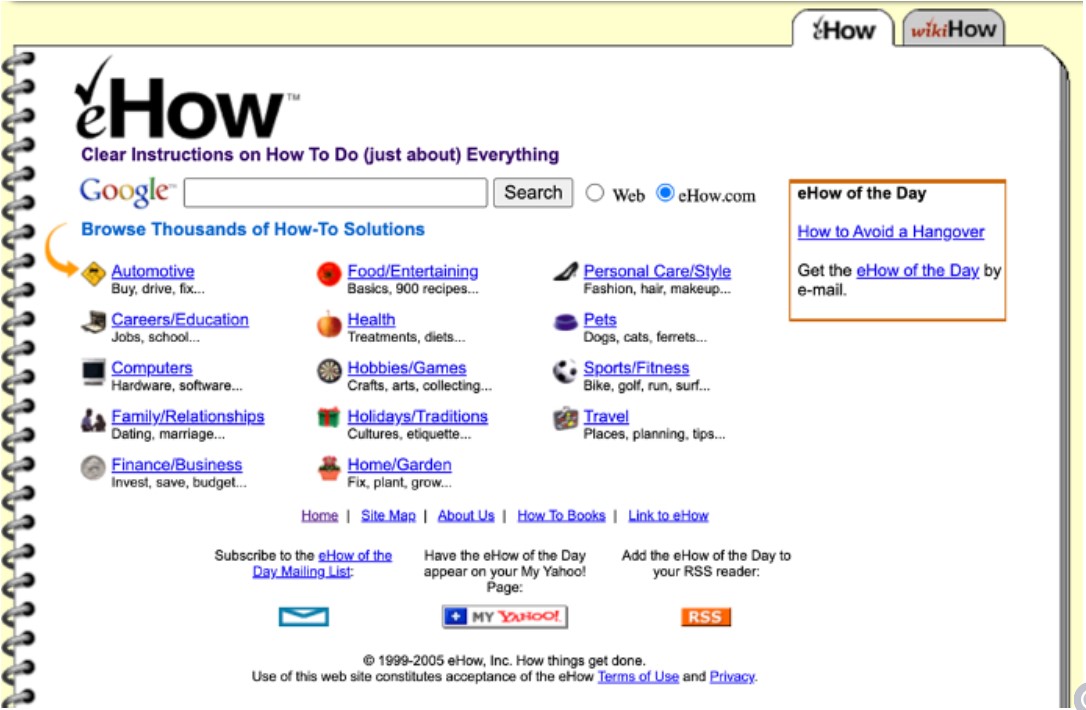
Source: Wayback Machine
Demand Media already had experience creating engaging content, so they made a couple of important upgrades to their new property by adding videos and a social element to the website. The site looked more professional, accessible, and engaging in less than a year.
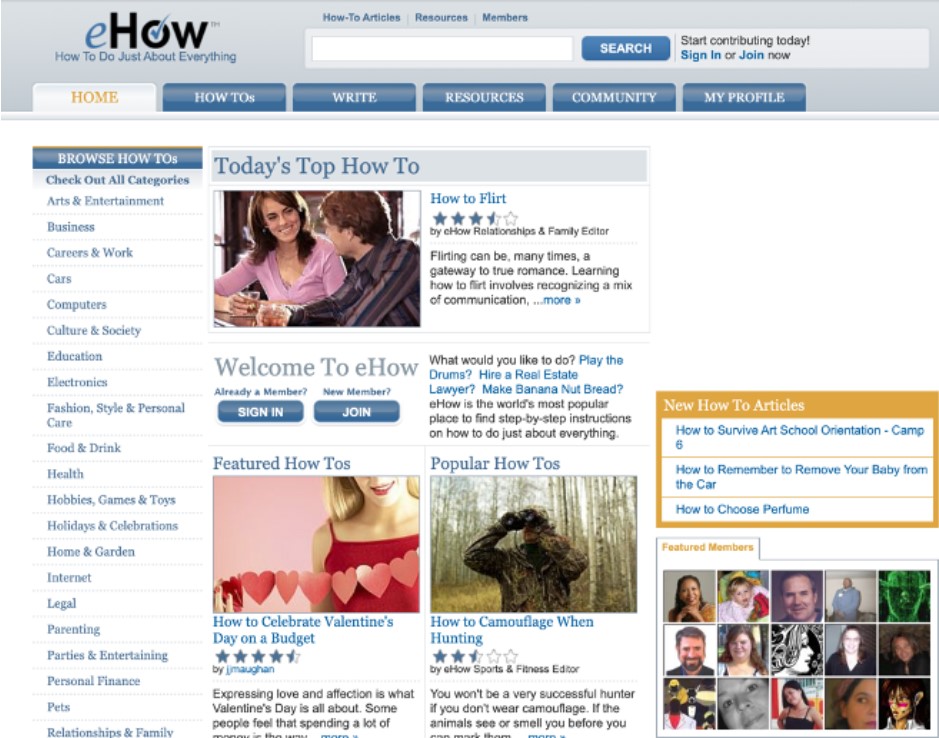
Source: Wayback Machine
However, not all was well in the world of eHow, as Demand Media stopped allowing editors to select the most relevant content to create. They instead relied on research to identify which keywords would earn the most money from their onsite ads.
Nothing wrong with that approach, right? That’s just leveraging SEO research and strategies to match your content with user intent. Any intelligent marketer would do the same thing.
The problems arose on the execution side of things, as Demand Media focused on demand, not the actual media. Once they’d identified the most valuable content to create, they’d pay a freelancer pennies on the dollar to write a barebones article that sometimes didn’t even cover the basics.
Turns out that when you pay your writers next to nothing, the quality follows suit.
Google didn’t take kindly to the fact that eHow’s articles delivered an awful user experience. In their eyes, eHow was nothing more than a content farm cranking out piles of pointless articles. And this was an understandable assessment, considering the site added about 5,000 new articles and videos daily.
Google Unleashes the Panda
To combat the content farming ways of eHow and other websites, Google made substantial changes to its ranking algorithm in early 2011. Officially known as the Panda update, it was actually referred to as the “farmer update” by many in the industry, thanks to its focus on rewarding quality in the rankings and preventing junk articles from rising to the top.
You can see the abrupt impact the algorithm change had on eHow’s SEO visibility in the graph below. Throughout the spring of 2011, their SERP performance cratered to unprecedented lows. By October, the company was experiencing a decline of nearly 90% compared to where they were before Panda took effect.
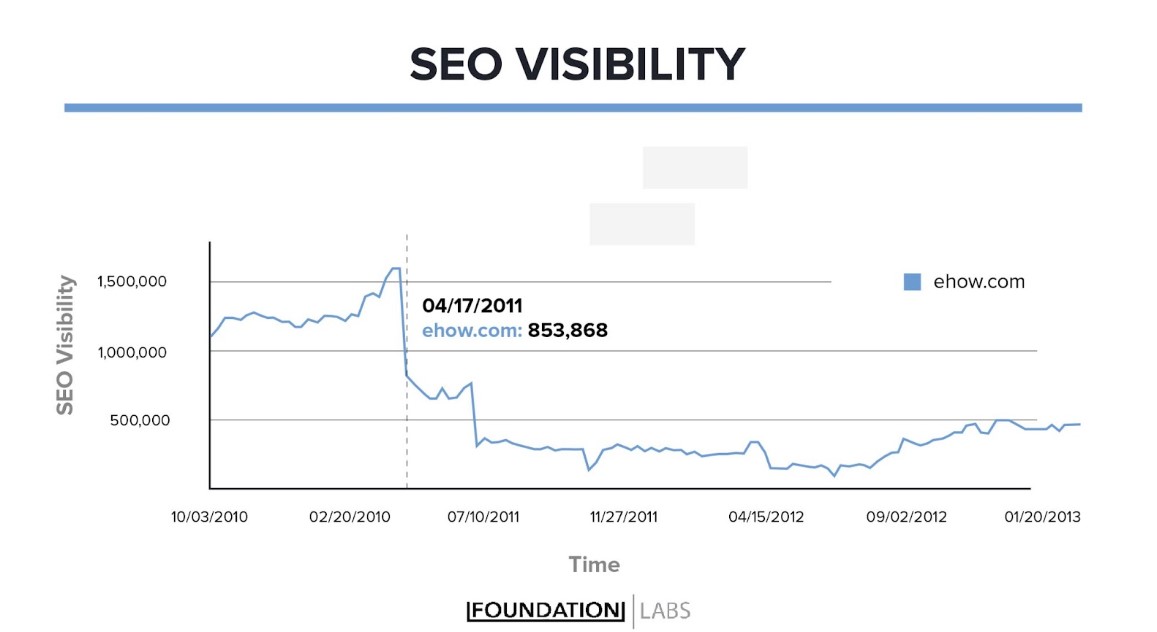
Source: Searchmetrics
You obviously can’t take a hit like that and not see it impact your bottom line. It was reported that Demand Media took a $6.4 million loss in Q4 of 2011 alone.
How could eHow even recover from the wrath of the Panda? The content model at Demand Media prioritized low pay and high volume, which were now the twin factors dragging their flagship brand into the abyss.
Just Add Quality
Although 2012 was a rough year for eHow, they began to regain their SERP footing and saw their pageviews rise accordingly. In early 2013, CEO Richard Rosenblatt issued a statement that essentially confirmed the company’s prior flaws and promised a better approach in the future:
We improved content quality and diversified our distribution channels by successfully revamping our content platform in 2012, and are now prepared to significantly increase our content investments in 2013. In addition, we became a leader in the generic Top Level Domain opportunity due to substantial investments we made in 2012. We plan to increase this investment ahead of the expected launch later this year.
A big part of the investment referenced here was paying writers more money to create better content. With an improved compensation system (though still not anywhere close to where it should be, according to this freelance writer), eHow could hold itself and its creators accountable for quality.
The company not only sought to deliver better articles, but they redesigned the website so that it wouldn’t look so much like an index. The stigma of being a content farm can be hard to shake, so the big topic lists and folder-like tabs had to go.
The 2013 version of eHow.com was an upgrade from the past, with a visual style resembling a news or lifestyle website. Notice how they even stylized the typefaces for each category header.
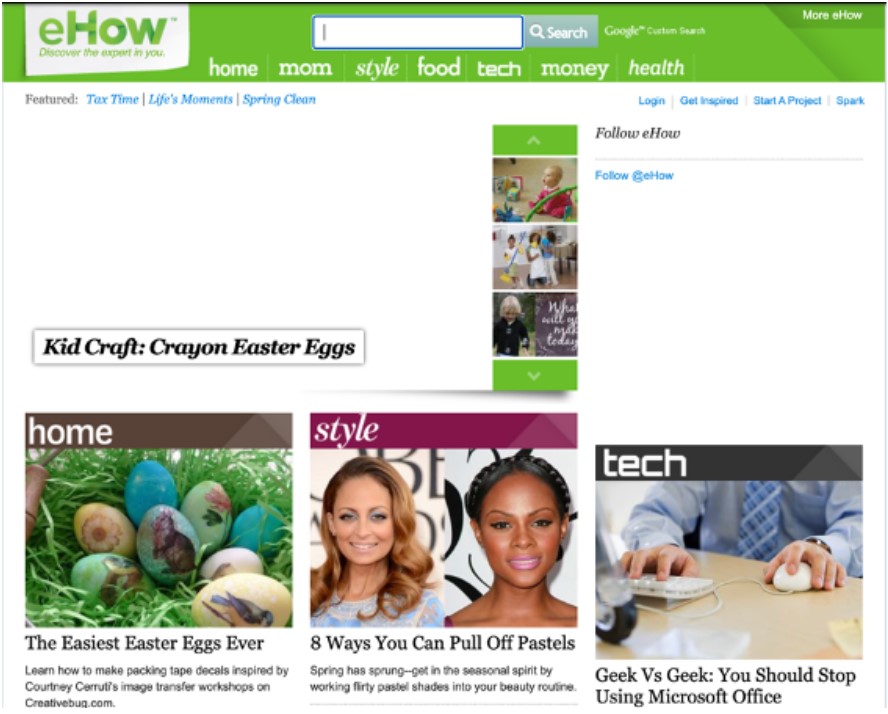
Source: Wayback Machine
As eHow explained in a press release, these channels would deliver unique experiences for visitors. The idea was that “each channel has its own identity, feature set, and personality to cater to specific topical interests.”
To further boost the content, eHow added a “Helpful?” button to their articles and videos. They said in the same press release that this feedback would go to the editorial team, empowering their QA efforts.
Another key upgrade to eHow’s content was that some of the articles and videos would be created in-house by employees from Demand Media Studios. This move ensured that marquee content would be available for the top keywords and the most relevant topics.
All these improvements were essential to appeasing Google and pleasing users–eHow also had to reassure advertisers that their website was a valid home for their ads. Check out this client-focused messaging from their website:
eHow.com’s articles and videos reach intent-driven consumers who use the site to take action in specific areas of interest. Advertisers can now be deeply rooted in a new model that encompasses display advertising, premium content creation, and integrated shopping experience, with the user at the forefront.
The words “premium content creation” and “user at the forefront” were once unthinkable for eHow, but the company had looked the Panda in the eyes and decided that they could do better. Let’s now examine how they have developed a powerful content marketing engine rooted in search intent.
The Right Ads Presented with the Right Content
In order to back up all their post-Panda promises, eHow has focused on delivering high-quality articles and videos that pay off user intent. While some brands might struggle to ascertain intent, eHow knows what is wanted and how to deliver.
Here’s a snapshot of eHow’s monthly traffic, with about 84% coming directly through search engines. After you move past the 11% of traffic that comes directly to the site, you see how paltry the other sources are for the brand. It’s all about people searching for answers.
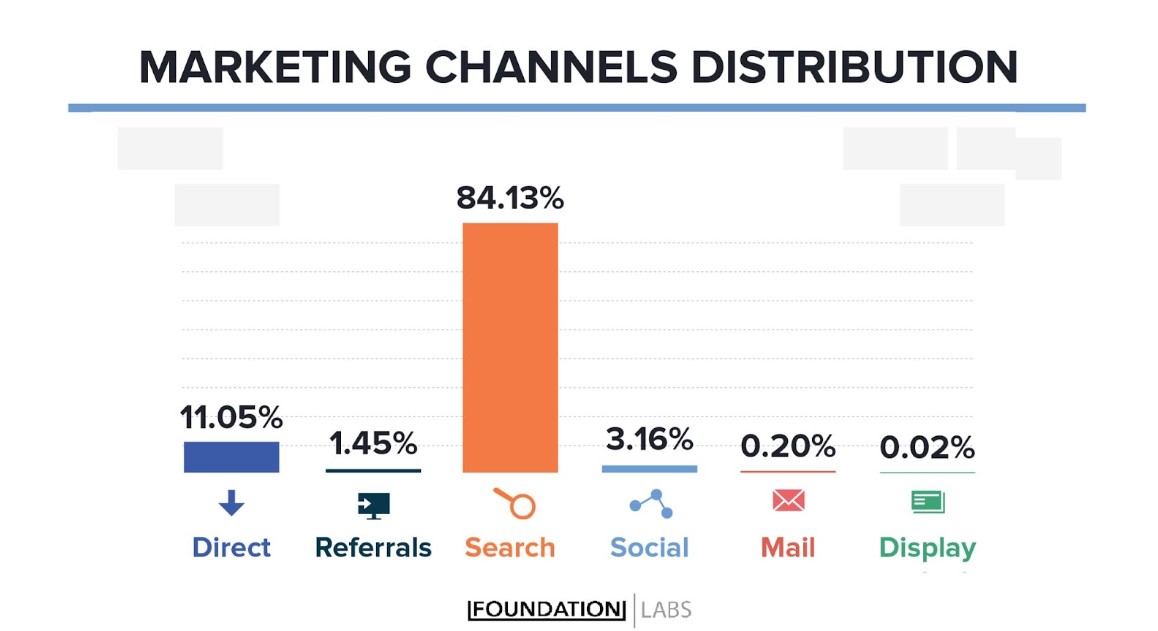
Source: SimilarWeb.com
This fact is underscored by eHow’s usage of keywords. Rather than leaning into transactional or navigational purposes, they want to deliver the relevant information that keeps people from bouncing and hopefully even lures them back for more.
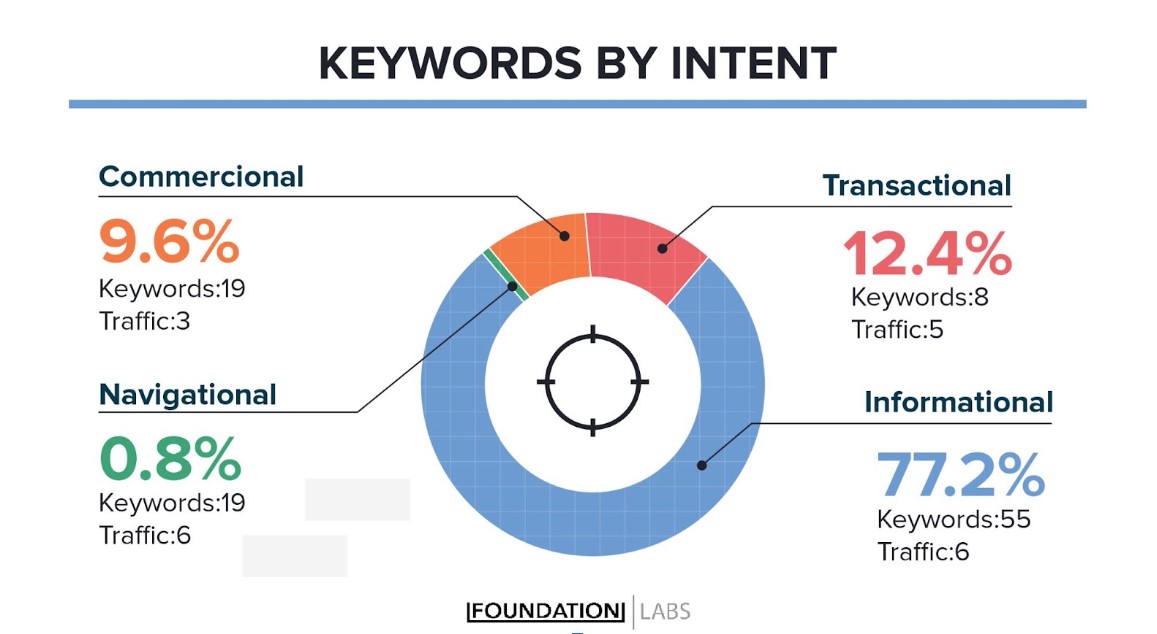
Source: SEMRush
The keywords in play drive excellent results, as eHow gets about 1.8 million monthly SEO clicks. And what are those keywords? Popular longtail examples include “how to fix a zipper” and “how to tile a backsplash.”
But eHow knows that searchers don’t necessarily type out full questions in search engines. So they also target shorter keywords that they can match to relevant content.
Here are five of their top keywords:
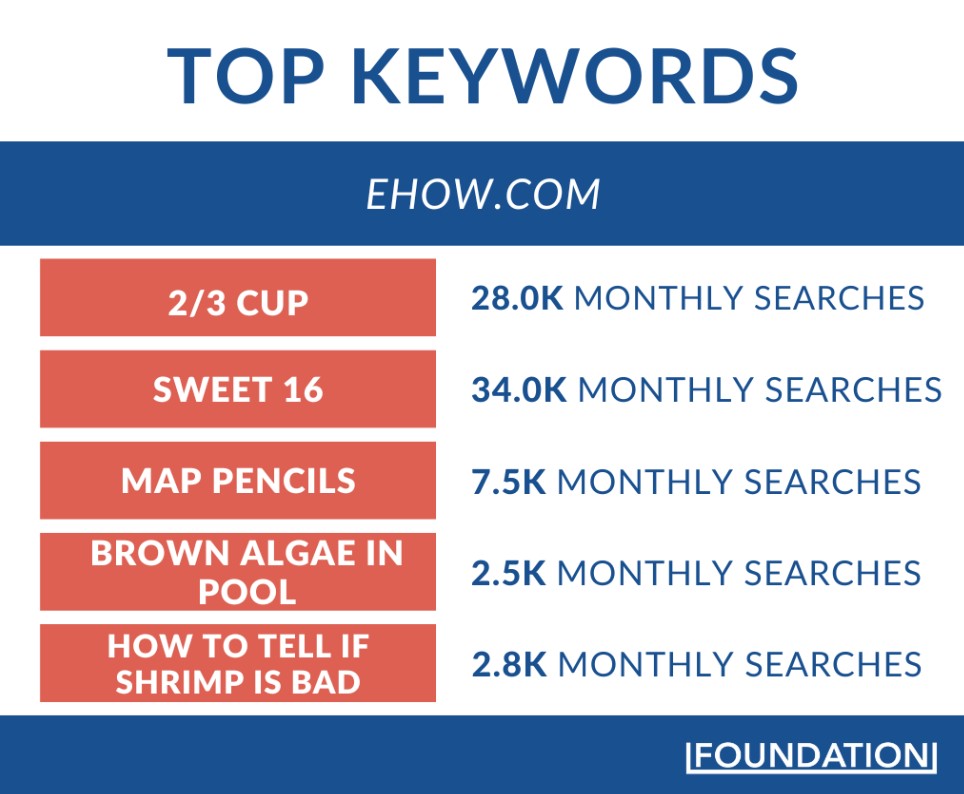
That list looks a bit random, right? You’ve got “toilet” reigning at the top, followed by “sweet 16.” But eHow uses its internal data and user feedback to create effective destinations for these types of queries.
Here are five of their top pages, which unsurprisingly correlate with many of the top keywords. When you have a massive trove of articles and videos, delivering the right content is often more of an issue of data management than content creation.
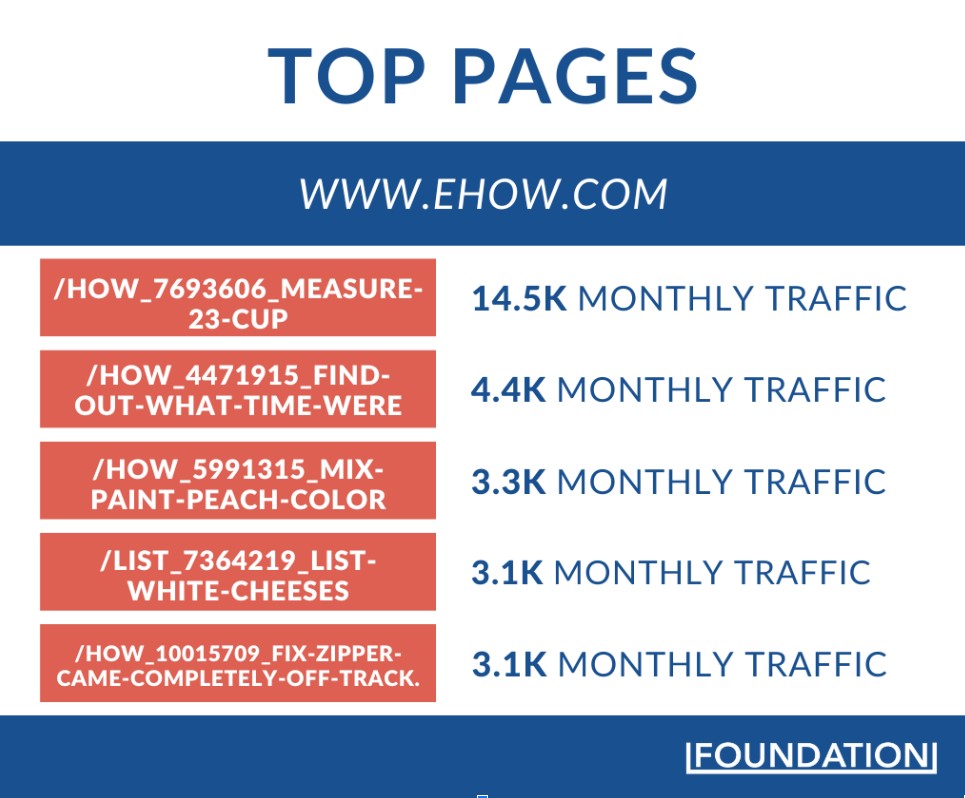
Once the user is onsite and viewing your content, the crucial objective is to present ads in the best way possible so that revenue keeps flowing in. So eHow uses a formula that looks like this:
optimized content + optimized ad viewability = higher ad revenue
How do you optimize ad viewability? It’s an evolving science that requires testing, testing, and more testing.
In one case study, eHow identified disappointing viewability metrics for banner ads on their “how-to” articles. They decided to A/B test a sticky banner that would stay visible as the user scrolled down the page versus the stationary banner.
While visibility unsurprisingly increased thanks to the persistence of the sticky banner ad, the A/B test revealed an array of negative impacts. Metrics revealed drops in pageviews, scroll depth, and user engagement with related eHow content. By cluttering the page with the sticky banner, eHow was degrading the user experience.
The proposed solution? A semi-sticky banner that would only remain for several seconds. This would boost ad viewability beyond where it had been with the static ad but prevent the negative results from constant obstruction on the page.
With another round of testing, eHow’s team validated their theory and made all their sticky banner ads time-bound.
A Sustainable Content Marketing Engine
By optimizing its content quality to serve users and their ad viewability to serve clients, eHow has turned the post-Panda doldrums into a winning track record.
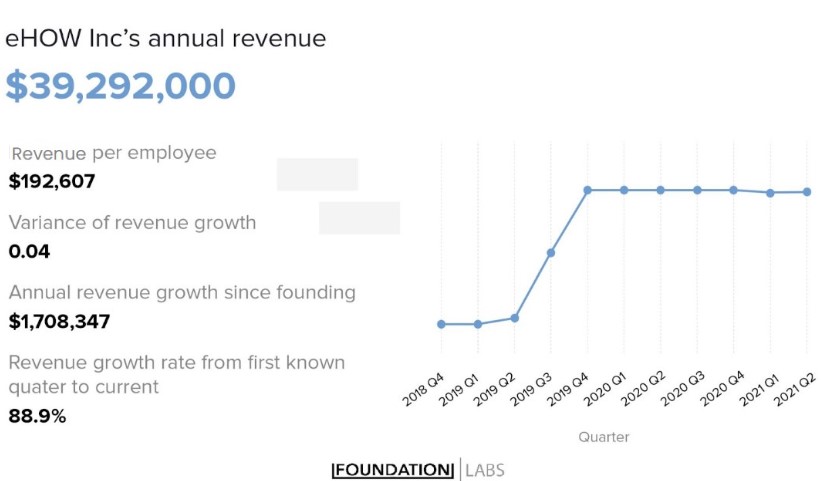
Source: KonaEquity.com
They brought in nearly $40 million in revenue in 2021, and the future continues to look bright due to a couple of key factors. First, their organic keyword performance has been steadily rising over the past year. With search traffic fueling 84% of their site visits, keyword performance is inextricably tied to their overall success as a brand.
The second factor has less to do with eHow than it does with generational and cultural trends. Research shows that more people are embracing the DIY route, which bodes well for one of the world’s largest collections of how-to guides.
Consider these stats:
- 73% of millennials prefer the DIY approach to hiring a professional
- 47% of American homeowners carry out a DIY project each year
- The global DIY retailing market is on pace to grow by $119 billion from 2019-2023
Unlike other brands that are struggling to catch hold with younger generations, such as Sears and Fox News, eHow is positively aligned with a major trend. More than 22% of their website visitors are between the ages of 25 and 34, and 56% of their traffic is under the age of 45.
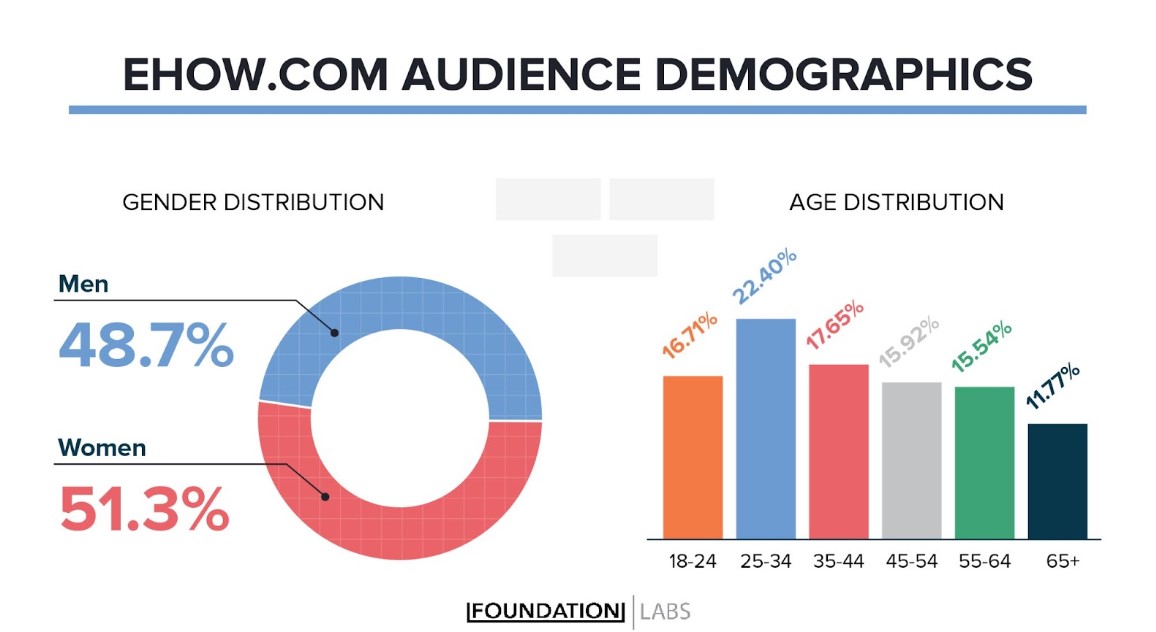
Source: SimilarWeb.com
By optimizing both its content and ad viewability, eHow is setting itself up for sustainable success. The stigma of being a content farm that they struggled with so much in their earlier years is now a distant memory. In fact, a sizable portion of their visitors were not even born in 1999, when the site was founded.
Lessons from eHow’s Wild Journey
The first lesson we can learn from eHow is how to handle mistakes. Because no matter how hard you try to strategize and execute effectively, you will occasionally make a mess of things.
What’s commendable is how the company reacted to the revenue decline and public shaming that followed Google’s Panda update. Rather than point fingers or play dumb, they used it as a catalyst to make their content and web presentation better. Thanks to their legitimately DIY approach, they survived a financial crisis and came out stronger.
Next up is the importance of testing. You can theorize all day long, but you’ll only know something if you collect data. We shared an example of eHow running an A/B test for banner ads, and that round of testing is representative of thousands of such tests they’re running each year.
So if you’re struggling with an underperforming aspect of your business, set up a testing structure that identifies the problems and illuminates the solution. And don’t stop there–use testing to upgrade your top-performing ads as well.
Finally, eHow is a great example of balancing priorities. In the old days, the company was only interested in its own financial performance. The low-quality content on their website didn’t help users and probably had a negative effect on advertisers’ reputations.
This “me first” approach simply isn’t just sloppy; it’s unsustainable.
As the brand matured, it realized that the road to revenue is always paved with good delivery. By providing better content and ad experiences, they served both sides of the business. They are hitting financial goals and building loyalty that will carry them forward for years to come.







